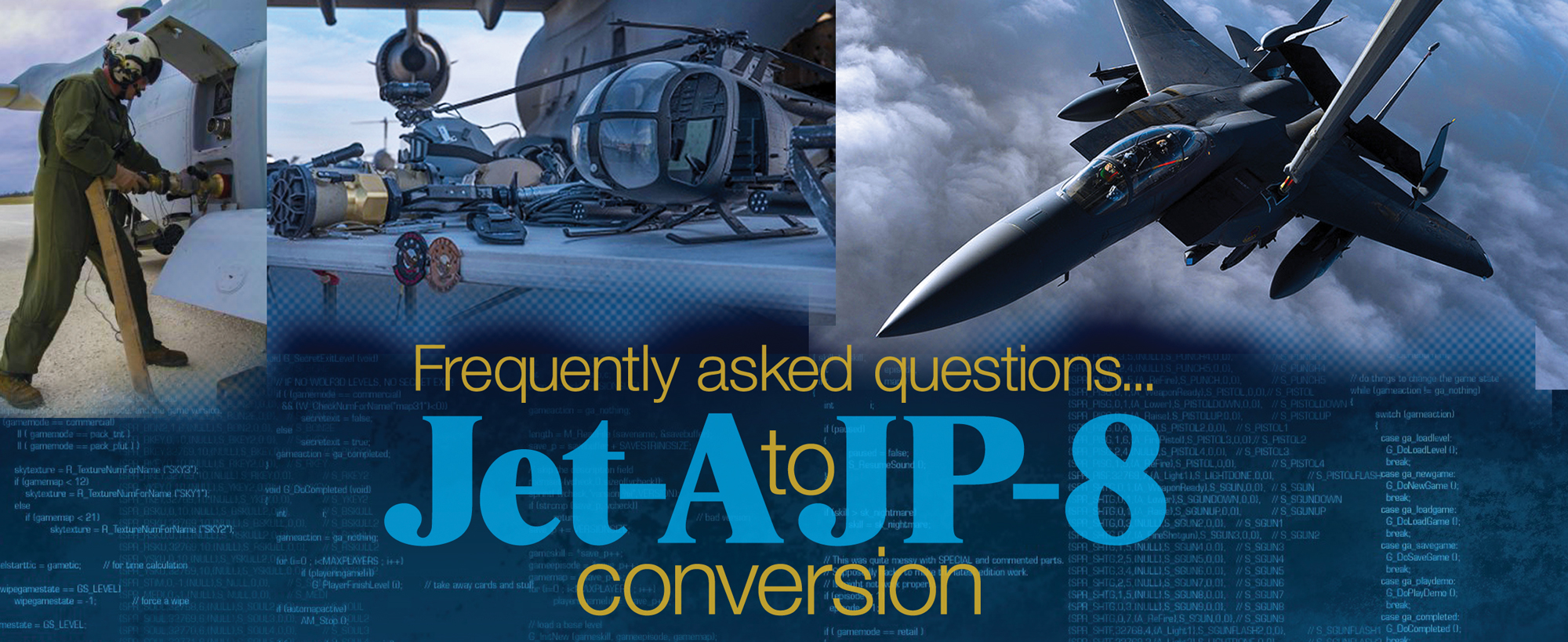When converting from Jet A-1 to JP-8 can it be injected directly into P-3 aircraft?
Typically, additives are blended into the fuel at some point prior to fueling the aircraft. This can be done at the refinery level, supply point, airport/airfield bulk storage, and even at the fuel delivery point. Most military installations have fuel blended either into their bulk storage tank prior to delivery to the fuel truck used to fuel the aircraft. The military is currently transitioning towards blending additives outbound of bulk storage as the fuel is being delivered by the fuel truck to the aircraft.
What are the all available equipment that can be used to convert to JP-8 fuel with refinery companies oil tank car injecting to fixed unit tank used by Marines?
Hammonds makes fluid-powered as well as meter-paced systems to blend multiple additives such as those used to make JP-8. Other manufacturers make meter-paced systems as well, but Hammonds does command a large percentage of equipment used by the U.S. Military. Hammonds equipment, specifically the Hammonds Model TPI-4T-4A-1, is used exclusively in the battle field by the U.S. Military and its allies as well as any NATO countries who fly U.S. military aircraft
When converting to JP-8, what is the method to confirm JP-8 product is proper quality?
Assuming that the base Jet A-1 is on spec, FSII can be checked with a Refractometer and SDA can be checked a conductivity meter. There is no field test for CI/LI additive. It must be verified by volumetric calibration so ensure it is on spec based upon the proper blend ratios. What test instruments are available to test the quality of JP-8? Please recommend to us. FSII can be tested with a Refractometer, available from several manufacturers, using ASTM D5006-96, Standard Test method for measurement of fuel system icing inhibitors in aviation fuels. Refractometers and as well as complete test kits for FSII concentration are available from Hammonds.
SDA can be tested with a conductivity meter, available from several manufacturers, using ASTM D2624. The most popular brand of meter used in the aviation industry is manufactured by EMCEE.
CI/LI There is no field test available for this additive.
What it the best way to correct if product quality of JP-8 is not normal?
Correction of off-spec fuel can be handled differently depending upon how the fuel is off-spec. If the fuel additive (one or more) is off-spec, the blend rates of the additive can be adjusted to bring the fuel back into spec. If the base fuel, the Jet A-1 is off-spec, you will need to refer to the fuel supplier. Solutions vary widely depending upon what the problem is with the fuel.
Can fuel that has been converted to JP-8 be continuously used on P-3 without a problem?
YES. The P-3 has been approved to operate on the following fuels: JP4, JP5, JP8, Jet A, Jet A-1 and Jet B.
What may be effected on P-3 aircraft if using fuel close to Jet A-1 characteristic?
There should be no ill effects of using Jet A-1. (see answer to question #6)
If non-proper fuel is used, what type of service will be required on the aircraft?
You will need to check with the aircraft manufacturer to determine proper procedures for rectifying the fueling of the aircraft with improper fuels.
When converting from Jet A-1 to JP-8 can you inform us detail list of available additives that can be used along with pricing?
The three additives that are required to make JP-8 are Fuel System Ice Inhibitor (FSII), Corrosion Inhibitor (CI) and Static Dissipating Additive (SDA).
There are multiple suppliers for each of the three additives available all around the world. Location and quantity will greatly affect price and availability.
Hammonds Fuel Additives, a sister company of Hammonds Technical offers FSII and CI.
Are there any technical papers or write-ups regarding effect of Jet Fuel A-1 and Jet Fuel JP-8 using on one particular aircraft?
We do not have ready access to any papers written on specific aircraft. Please check with the aircraft manufacturers for specific documents related to specific aircraft.
